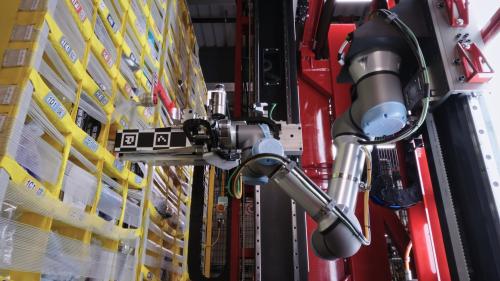Executive Summary
Views on what is happening to labor demand in the middle of the U.S. labor market are strongly divergent.
Many economists argue that the middle is “hollowing out” as a result of digital technologies and globalization
that make it easy for employers to replace workers doing routine tasks. But many employers argue they can’t
fill the middle-skill jobs they have. My own calculations based on Bureau of Labor Statistics data show that
the traditional middle of the job market – composed primarily of construction, production and clerical jobs
that require fairly little education – has indeed been declining rapidly. But another set of middle-skill jobs
– requiring more postsecondary education or training – in health care, mechanical maintenance and repair
and some services – is consistently growing, as are skill needs within traditionally unskilled jobs. Among
these are the ones that employers have had trouble filling. While many employers have done little to attract
new workers by raising wages or investing in training, some employer reluctance to invest in skill-building
on their own makes economic sense; and our educational system has done too little to generate employees
with these skills as well. A new set of education and training policies and practices are hopeful in this regard,
though policies to more directly expand the numbers of middle-paying jobs might also be needed.
Introduction
Is the middle of the labor market “hollowing out” or even
disappearing? If so, is it folly for workers to gain skills
and credentials – which are usually short of a Bachelor’s
(BA) degree – for this segment of the U.S. labor market?
Opinions on this very basic and important question are
strangely mixed.
On the one hand, many labor economists, such as David
Autor (2010), have demonstrated major declines in either
wages or employment growth (or both) in the middle of
the job market since the end of the 1980s. Maarten Goos
and Alan Manning (2007) show similar
results for the United Kingdom (and
some other EU countries). And Nir
Jaimovich and Henry Siu (2012) argue
that this polarization gathered steam
in the Great Recession, with declining
employment in a number of cyclically-
sensitive industries like construction and manufacturing
further shrinking the availability of middle-wage jobs.
Jaimovich and Siu also argue that the recession-based increase
in polarization will be at least partially permanent,
since employers use periods of labor market downturn to
permanent change their production methods and workplace
organizations.
On the other hand, we have large numbers of business owners
and their trade associations claiming that middle-skill
job growth remains substantial – and that, if anything,
they have great difficulty filling the vacant middle-skill
jobs they now have. Surveys of employers by the National
Federation of Independent Businesses and others show
a growing tendency of business owners and managers to
complain about their inability to hire skilled workers, especially
as the labor market recovers from the recent recession
(Madigan, 2015). At the same time, some economists
scoff at these claims, arguing that the same businesses
have been cutting back on their training expenditures and
refusing to raise employee wages in order to attract and
retain the more skilled employees they seek.
Resolving this apparent paradox is crucially important, if
we want to better understand the causes of stagnant earnings
for the American middle class. It is also critical if we
want to develop a set of policies that have some chance
of improving the skills of U.S. workers and their earnings
prospects over time.
The Brookings Institution is committed to quality, independence, and impact.
We are supported by a diverse array of funders. In line with our values and policies, each Brookings publication represents the sole views of its author(s).




